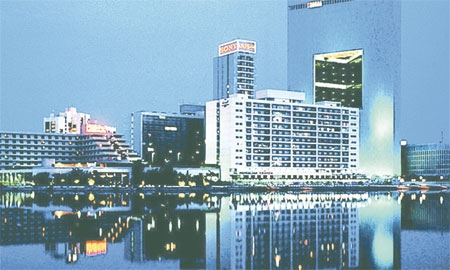There are many theories as to how long Jeddah has been inhabited – some archaeological studies suggest that there were people living in the region as far back as the Stone Age and historians trace the city’s history back to the fourth century BC as a fishing settlement – yet there is no doubt that today Jeddah is a major thriving commercial, cultural and religious centre that has built itself up around its long history, carefully conserving its heritage.
During the sixth century the city of Jeddah greatly rose in importance with the birth of Islam; in the year 647 AD, Othman bin Affan chose it as the major port city from which to access the holy city of Makkah. He dubbed the city ‘Balad Al-Qanasil’, or City of Consulates. By the tenth century, written accounts described Jeddah as secure, prosperous and clean.
Over the course of the last 1,500 years, Jeddah has passed from Umayyad hands to the Abbasids, followed by the Ayyubids, Mamluks, Ottomans, and finally, the present Al-Saud dynasty.
Nowadays, Saudi Arabia’s second largest city, population 3.4 million and rising, is characterised by its curious mixture of Turkish architecture – seen in the tall and graceful coral limestone buildings of the old town – and modern skyscrapers, all of which line the region’s 50-mile Corniche. Jeddah is KSA’s principle port on the Red Sea, and remains today the main gate through which the majority of pilgrims arrive by air and sea to perform Umrah, Hajj or to simply visit the two Holy Mosques.
Jeddah’s tourism sector, consequently, is one of the city’s strongest, yet it has also given way to many other successful industries. From the manufacturing and distribution of consumer goods to finance and banking, and from real estate to healthcare, Jeddah’s economy is widely based on a variety of sectors and myriad successful companies that have helped catapult the city into the privileged position as one of the Middle East’s most important industrial and business centres. Among the world’s emerging nations, Jeddah is ranked fourth in the 2010 Innovation Cities Index.
City mayor Hani Abu Ras is determined to help maintain the city’s pace of development that Prince Khaled Al-Faisal (Governor of Makkah Province) and Prince Misha’l Bin Majed (Governor of Jeddah) have led. He is also emphasising the importance of environmental awareness in the city’s growth, saying that different sectors must come together and cooperate to protect Jeddah’s environment, keeping it clean and reducing pollution. Some of the key issues that Mr Abu Ras will address during his term, which began last August, are traffic congestion, the sewage network and various other problems caused by flooding in late 2009 and earlier this month.
Arabic speaking visitors should have little trouble understanding the Hijazi dialect spoken in the region, yet one can quite easily get by in English, as it is the second language of choice in schools.

0 COMMENTS